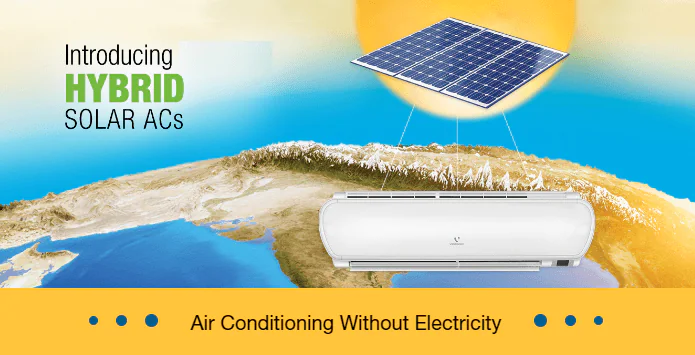Solar Air Conditioner: Efficient and Sustainable Cooling Solution
With the increasing concern for environmental sustainability and the rising cost of energy, more and more people are turning to alternative sources of power. One such innovation is the solar air conditioner, which utilizes solar energy to cool indoor spaces while minimizing electricity consumption. In this article, we will delve into the workings of a solar air conditioner, its advantages, different types available, factors to consider when choosing one, the installation process, and provide answers to commonly asked questions.

What is a Solar Air Conditioner?
A solar air conditioner is a cooling system that operates by integrating solar panels with a conventional air conditioning unit. It employs solar energy to power the compressor and other components of the air conditioner, reducing dependency on the electrical grid. This eco-friendly technology not only helps in reducing carbon footprint but also brings down energy costs.
How Does a Solar Air Conditioner Work?
A solar air conditioner operates through a complex mechanism that combines solar power generation and air conditioning technology. The process begins with solar panels, usually mounted on the roof or in an open area with maximum sunlight exposure. These panels absorb sunlight and convert it into direct current (DC) electricity.
The DC electricity produced by the solar panels is then sent to an inverter, which converts it into alternating current (AC) electricity, suitable for running the air conditioner. The AC electricity is then used to power the compressor, fan motors, and other components of the air conditioner, allowing it to cool the indoor space.
Solar Air Conditioner Price 2022
| Solar AC Model | Panel Watt | Selling Price |
| 1 Ton Solar Air Conditioner | 1500 Watt | Rs. 99,000 |
| 1.5 Ton Solar Air Conditioner | 2500 Watt | Rs. 1,39,000 |
Advantages of Solar Air Conditioners
Solar air conditioners offer several benefits over traditional air conditioning units:
- Energy Efficiency: Solar air conditioners significantly reduce electricity consumption, resulting in lower utility bills.
- Environmental Friendliness: By utilizing renewable solar energy, these air conditioners help reduce carbon emissions and contribute to a greener environment.
- Cost Savings: Over time, the investment in solar panels can be recovered through reduced energy costs.
- Remote Accessibility: Solar air conditioners can be equipped with smart technology, allowing remote control and monitoring through mobile devices.
- Grid Independence: With the ability to operate off-grid, solar air conditioners provide a reliable cooling solution during power outages.
Types of Solar Air Conditioners
There are two main types of solar air conditioners:
Grid-Tied Solar Air Conditioner
Grid-tied solar air conditioners are connected to the electrical grid. They use solar power during the day but switch to the grid at night or during periods of low sunlight. This system allows users to use solar energy while ensuring uninterrupted cooling.
Stand-Alone Solar Air Conditioner
Stand-alone solar air conditioners are not connected to the electrical grid. They rely solely on solar power, making them suitable for remote areas or locations with frequent power outages. These systems typically have energy storage units, such as batteries, to store excess solar energy for use during non-sunny periods.
Factors to Consider When Choosing a Solar Air Conditioner
When selecting a solar air conditioner, several factors should be taken into account:
- Energy Efficiency: Look for air conditioners with high energy efficiency ratings to maximize solar power utilization.
- Cooling Capacity: Consider the cooling capacity required to adequately cool the intended space.
- Installation Requirements: Evaluate the installation process and ensure it aligns with your available space and resources.
- Maintenance and Durability: Check the maintenance requirements and durability of the air conditioner to ensure long-term performance.
- Cost: Compare the upfront cost of the system with the potential long-term energy savings.
Installation Process of a Solar Air Conditioner
The installation process of a solar air conditioner involves the following steps:
- Solar Panel Placement: Determine the best location for solar panel installation, ensuring maximum exposure to sunlight.
- Inverter Installation: Install the inverter, which converts the DC electricity from the solar panels into AC electricity suitable for the air conditioner.
- Connection to Air Conditioner: Connect the inverter to the air conditioning unit, ensuring proper wiring and compatibility.
- Electrical Integration: Establish the electrical connections between the solar panels, inverter, and air conditioner, adhering to safety standards.
- Testing and Commissioning: Once the installation is complete, test the system and ensure it is functioning optimally.
- Monitoring and Maintenance: Regularly monitor the performance of the solar air conditioner and conduct routine maintenance to maximize efficiency.
